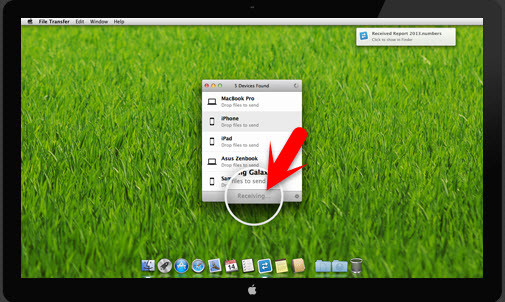“I want to have my iPhone updated to the new iOS 8. But I first need to backup all my iPhone data to my Mac Yosemite for safe before installing iOS 8. Anybody can help?”-Amanda
Many users now are familiar with the new iOS 8 and Yosemite, wanting their devices updated to the two new operating systems. However, to make sure the security of your iDevice data, you’d better backup your iDevice before updating to the latest iOS. Here I would like to share two easy ways on how to backup iPhone to Yosemite and El Capitan.
Part 1. Backup iPhone Files to Yosemite and El Capitan with iTunes
May 20, 2020 Part 1: Android File Transfer for Mac OS X 10.11 EL Capitan Alternative If you want to avoid the problem of Android File Transfer OS X not working, MobileTrans for Mac will be a great alternative solution compared to the usual means of mobile transfer.
iTunes is very useful for you to backup your iPhone Contacts, Calanders, Messages, Settings and more to Mac Mavericks. Once you have installed iTunes on your Mac, you can follow the below steps to backup iPhone to Mac Mavericks.
- Connect your iPhone to Mac Yosemite and El Capitan with a USB cable.
- Launch iTunes. If you have set autosync, the backup process will begin automatically. If you haven’t enabled the autosync, move to the next step.
- Click Summary and navigate to the left pane to select your iPhone. Then click the Back Up Now button in the main interface to backup your iPhone.
Note: iTunes can only backup iPhone settings, Contacts, Messages or other purchased Apps. You cannot use it to backup your iPhone media files like music and videos downloaded from Internet or photos in iPhoto library.
Part 2. Backup iPhone Files to Yosemite and El Capitan with dr.fone
If you want to backup more iPhone files to Yosemite and El Capitan such as songs purchased or non-purchased from iTunes Store, videos downloaded from the Internet, and iPhoto Library photos, dr.fone for Mac can be your handy iPhone backup tools. After you launch dr.fone on your Mac Yosemite and El Capitan and connect your iPhone to Mac with USB cable, you can follow the below simple steps to process iPhone backup on Yosemite and El Capitan.
Now dr.fone fully support MacOS 10.12 Sierra system and the Apple's official iOS 11, and the earlier versions.
Step 1: Backup iPhone Music to Yosemite and El Capitan
dr.fone can automatically detect your iPhone and show your device information in the main interface. To transfer music on your iPhone to Mac, you can click on the Music tab and select the wanted music. Click on the Export button the export them to Mac to backup the files.
Step 2: Backup iPhone Photos to Yosemite and El Capitan
To one-click backup photos, click “Backup Photos to Mac”in the main window. In the prompt window, set a destination on your Mac to save the photos and click “Save” to finish the process.
Alternatively, you can just transfer some certain photos by clicking the Photos menu and select the pictures from your Camera Roll, Photo Stream or Photo Library, and then click the Export button to backup the photos from your iPhone.
Step 3: Backup iPhone Videos to Yosemite and El Capitan
Click the Videos menu and your videos categories will appear on the main interface. Click the Movies tab and select the videos you want and click the Export button to backup the videos.
dr.fone is fully compatible with iPhone 8, so you can use it to backup iPhone 8 to Yosemite. Try out dr.fone now.
Related Articles & Tips
There are lots of ways to move your files between a Mac and Android device. The easiest way is using Bluetooth File Exchange right from the menu bar on your Mac.
There are lots of ways to move your files between Mac and Android devices. The easiest way is using Bluetooth File Exchange right from the menu bar on your Mac.

Transfer Android Files to Mac via Bluetooth
First, you’ll turn on Bluetooth on both devices. On the Mac, go to System Preferences > Bluetooth and make sure it shows “Bluetooth: On.” If not, click Turn Bluetooth On. You should see the phrase “Now discoverable as” and then the name of your computer in quotes.
Next, on your Android device, go to Settings > Bluetooth. You should see your Mac listed. In this example it’s Basestar. Make sure the pairing codes match and click “Pair” on each device. Your Mac and your Android device now make a lovely couple.
Tap on Pair on your Android device too.
After you pair your phone or tablet to your Mac, click on the Bluetooth icon on your Mac’s menu bar. Your Android device will show up, from which you can click Send File to Device. On your Android device, accept the file.
El Capitan For Mac Download
If you want to send files to your Mac, you’ll enable Bluetooth Sharing. Go to System Preferences > Sharing. In the sharing preference pane, check the box for On next to “Bluetooth Sharing.” From here, you can set where you want the downloads to go, and what to do when you get a transfer request. In this example, it goes to the Downloads folder.

After you set up Bluetooth Sharing on your Mac, go to your Android device and click the share icon. The file will go to the folder you specified in Bluetooth Sharing on your Mac. Again in this example, it’s the Downloads folder.
Android Transfer For Mac El Capitan Free
Now you can move files between your Mac and Android device without cables and third-party software.



